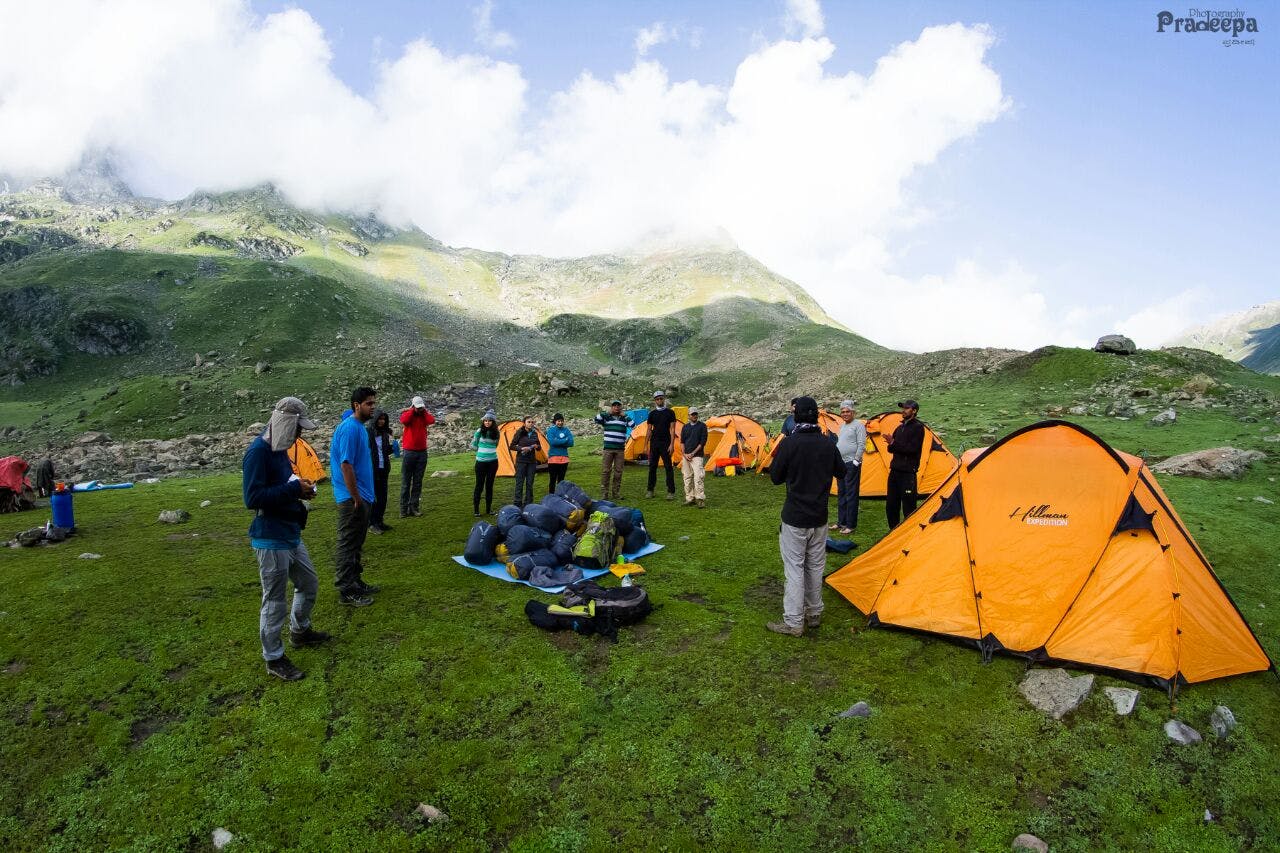How Trekking Can Boost Your Management Skills
Share this story
How Trekking Can Boost Your Management Skills
Category Collaborative Leadership Program Experiential Learning
By Lavanya Pangtey
2018-09-07
Here are two random facts:
1. Mount Everest towers over all other mountains at 8,848 meters.
What is the correlation between these two?
Venkatesh is one of the 8300 people have summited Mount Everest since 1905.
But why spend months training for a trek instead of spending that time running your business?
According to Venkatesh, the kind of mental strength you build when climbing high mountains and the lessons you learn in perseverance and resource management cannot be taught in any classroom or board room. And yet, these skills are vital in the business world.
His words pretty much sum up the essence of the Himalayan Mountain Challenge.
More specifically, this program provides students the opportunity to implement in real life all the theoretical knowledge they have gained in the classroom.
Three of India’s prominent IIMs (Bangalore, Indore and Lucknow) are already onboard with this Programme and offer it has a credit course to their students.
The descent from summit. PC: Padmanava Sen
What Does Trekking Have To Offer?
The Himalayan Mountain Challenge Program blends Himalayan trekking with team exercises. It especially focuses on Organisational Behaviour, a topic that many students often find uninteresting in the classroom. For a dull subject in the classroom, outdoor education is the perfect platform to make learning interesting and engaging.
These exercises are challenges which can only be completed if the teams work unison and strategise effectively. The skills that students gain from these exercises have implementation in every aspect of their personal and professional lives. Here is a look at what this Program has to offer:
Leadership
Each team in this Program is made up of 8-10 persons. One among them is appointed the team leader. The team leader charged with the responsibility to ensure that the team is on track with the action plan.
The exercises in this Challenge are not a simulation of real life but are real challenges in themselves. The teams are provided with only the basic information. They have to devise a strategy and navigate to the their end goal by themselves. In doing so they have to face the conditions of the mountainous wilderness. This is an excellent test of leadership skills. Some are naturally good at it while other take valuable lessons from it.
Teamwork
The Himalayan Mountain Challenge Program is all about working as a team to achieve the top spot. In order to do so, the team members need to establish good communication among themselves. They must effectively distribute chores and task so that the contribution of each member can but their best skills to use to reach the common goal. The teams need to achieve organisational efficiency and learn to cooperate with each other.
Managing resources
Resource management is an important skill to be gained out of the Himalayan Mountain Challenge. The students learn to work with limited resources: they are given only the basic amenities and must learn to make do with them. They are also given a limited amount of ‘Mountain Money’ to encourage finance management. The teams must use the Mountain Money very wisely lest they risk losing it all.
Strategise
Each team is a mix of people of various skill sets, aptitudes and physical fitness. In this race to the top of the mountain, the team members must design a plan of action in consideration of three points: the individual skill and potential of the team members, the physical challenges imposed by the mountain and the rules and criteria set by the program managers.
Students must also think ahead and make back-up strategies in case their initial plan fails. Any team that spends time in devising a good strategy tends to perform much better than the rest.
Critical thinking
Decision making and critical thinking are very important skills that are honed in this experiential learning program. The outdoors are never easy on anyone. The conditions can change drastically which might call for a complete abandonment to the set strategy. Or a team member by not be able to perform their tasks so that others have to make up for that. One must stay calm and think rationally through such high tension circumstances. The skill of knowing when to advance, when to retreat and when to stay put are be tested and learnt in the duration of this program.
Problem Solving
At the Himalayan Mountain Challenge, the students are tasked with devising a solution to a real life problem that the mountains face. They must to exercise the their analytical and creative parts of the mind in order to do so. After spending time observing the situation in the mountains, the students present their solution as the final task. In doing so they learn how to effectively brainstorm ideas and get to exercise their communication skills among their teammates.
Ethics
When a person is faced with a tough situation, their moral and ethics are questioned. The Himalayan Mountain Challenge Program pushes the body and mind and helps students discover their real character. The student’s’ own ethical and moral principles are tested constantly, be it making quick decisions or dealing with team dynamics. They also learn the ropes of motivation and team morale.
What you should do now
1) If you would like to read more articles on Experiential Learning, click here.
2) If you are interested in signing up for this programme, then contact us here.
3) If you ended up here by chance and were actually looking for treks to do, then head over to our upcoming treks page. You’ll find all our Himalayan treks there.
4) If you want to see the 13 best treks of India, then get our free guide book here.
Sign up for our much loved Weekly Mailer
We have terrific trekking tips, trek updates and trek talks to look forward to

